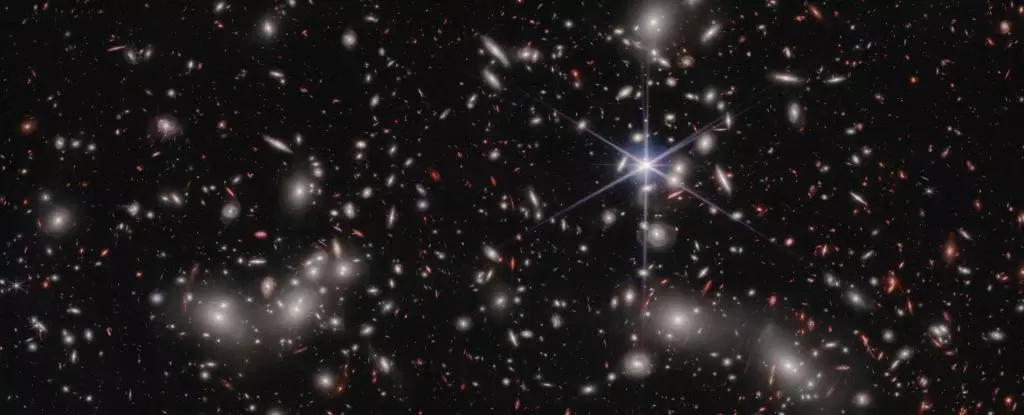The dark and formless void of the early Universe has long been a mystery, but recent data from the Hubbles and James Webb Space Telescopes has shed light on this enigmatic period. It has been revealed that the origins of free-flying photons in the cosmic dawn can be traced back to small dwarf galaxies that played a crucial role in clearing the fog of murky hydrogen that once filled intergalactic space. This discovery highlights the significance of ultra-faint galaxies in the evolution of the early Universe and underlines the importance of understanding low-mass galaxies in shaping the Universe’s history.
The Dark Ages of the Universe
In the early stages of the Universe, immediately following the Big Bang, space was filled with a hot, dense fog of ionized plasma. This dense medium made the Universe dark, as photons were unable to penetrate the fog and instead scattered off free electrons. However, as the Universe cooled, protons and electrons combined to form neutral hydrogen and helium gas, allowing light to pass through. The first stars that emerged from this gas produced radiation that reionized the gas and transformed it into ionized plasma. This marked the end of the cosmic dawn, around 1 billion years after the Big Bang, when the Universe was entirely reionized.
The James Webb Space Telescope has provided valuable insights into the cosmic dawn, revealing unexpected findings about the sources responsible for the reionization process. Contrary to previous assumptions that powerful entities such as massive black holes or large galaxies were the primary drivers of reionization, new observations suggest that dwarf galaxies are actually the key players. Studies of a galaxy cluster called Abell 2744, using data from both JWST and Hubble, have shown that tiny dwarf galaxies were abundant in the early Universe and emitted significant amounts of ionizing radiation.
While these findings represent the most convincing evidence to date regarding the force behind reionization, further research is needed to confirm the results. Scientists intend to study more regions of the sky to obtain a broader sample of early galactic populations and ensure that the observed dwarf galaxies are representative of the cosmic dawn period. The JWST has opened up new possibilities for exploration, and researchers are optimistic about the potential for uncovering more secrets about the early Universe.
The discovery of dwarf galaxies as the primary actors in the cosmic reionization process is a significant breakthrough in our understanding of the early Universe. This new perspective challenges existing theories and paves the way for future discoveries that could reshape our current knowledge of cosmic evolution. As we continue to delve deeper into the mysteries of the Universe, the role of dwarf galaxies in shaping its history may hold the key to unlocking even more secrets waiting to be revealed.



Leave a Reply